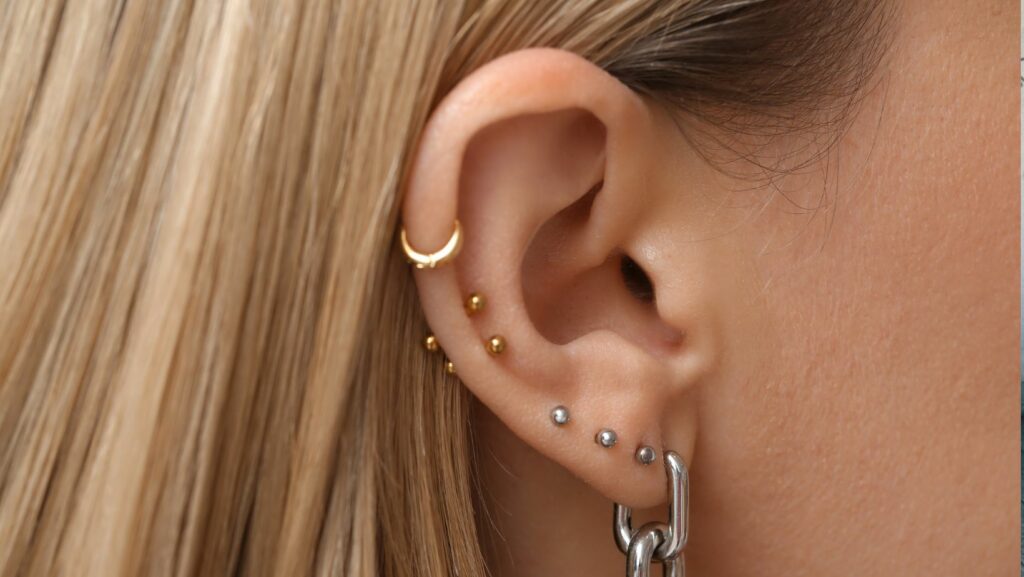Daring to defy convention, individuals worldwide are embracing the art of body modification. Among the most intriguing aspects of this trend is the realm of body piercings. But not all piercings are created equal – some are decidedly more painful than others.
This article peels back the veil on the top 10 most painful piercings, offering insights to those brave enough to consider them. It’s not just a ranking; it’s a journey into the world of pain thresholds, personal expression, and the stunning aesthetics that make each piercing worth the discomfort.
So, if you’ve ever wondered which piercing could make even the most hardened tattoo enthusiast wince, you’re in the right place. Stay tuned as we delve into the world of the most intense body modifications.
Top 10 Most Painful Piercings
 In the exploration of body modifications, it’s crucial to grasp the pain levels associated with different piercings. Pain isn’t an exact measurement, it varies with various factors and personal experiences. Recipients must comprehend these nuances to make informed decisions.
In the exploration of body modifications, it’s crucial to grasp the pain levels associated with different piercings. Pain isn’t an exact measurement, it varies with various factors and personal experiences. Recipients must comprehend these nuances to make informed decisions.
The pain associated with a piercing is influenced by several factors. First, consider the location of the piercing: Areas with fewer nerve endings, like the earlobes, typically inflict less pain. In contrast, areas laden with nerve endings, such as the nipples or navel, might cause more distress.
Second, gauge the professional skill of the piercer. Expertise matters: People don’t feel the same level of pain in the hands of an experienced and skilled piercer as they do with a novice. For instance, an expert piercer knows to pierce quickly and accurately, which can minimize pain.
Third, the type of jewelry used can impact the pain levels. Larger gauge needles and pieces of jewelry cause more damage, leading to amplified pain.
Finally, an individual’s physiological response, including adrenaline and endorphin release, plays a role in how much pain is felt during the piercing process. A natural adrenaline rush can help numb the pain temporarily, while endorphins, the body’s natural painkillers, can minimize post-piercing discomfort.
Pain Tolerance and Personal Experience
 An individual’s pain tolerance plays a key role in their experience with piercing. Some people might find a specific piercing barely uncomfortable, while others may perceive it as excruciating. This variance is due to individual pain thresholds, which are influenced by both physical factors, such as skin sensitivity, and psychological factors, like fear or anxiety.
An individual’s pain tolerance plays a key role in their experience with piercing. Some people might find a specific piercing barely uncomfortable, while others may perceive it as excruciating. This variance is due to individual pain thresholds, which are influenced by both physical factors, such as skin sensitivity, and psychological factors, like fear or anxiety.
Personal experience, too, plays into pain perception. Someone who has had numerous piercings may find the process less painful due to familiarity with the procedure and pain management spells. In contrast, a first-timer might find the same piercing more painful due to unfamiliarity and anxiety.
In the end, though, no two piercing experiences are identical. It emphasizes the importance of education and readiness before taking the plunge into body modifications. Regardless of pain tolerance or personal experience, being informed helps take some of the sting out of getting a piercing.
Top 10 Most Painful Piercings
 Piercing enthusiasts brace themselves for the discomfort associated with their chosen body modifications. Familiarization with the top 10 most painful piercings proves beneficial for accurate expectation management.
Piercing enthusiasts brace themselves for the discomfort associated with their chosen body modifications. Familiarization with the top 10 most painful piercings proves beneficial for accurate expectation management.
Helix piercing, a common type of ear piercing, pierces the ear’s upper outer rim. Pain levels range from moderate to high depending on the individual’s pain tolerance, and can be amplified if multiple piercings are done simultaneously.
The rook, an area in the inner ridge of the upper ear, typically experiences a higher level of discomfort during piercing due to its thicker cartilage. Precautions need to be taken during the healing process, exacerbating discomfort occasionally.
In a conch piercing, the needle penetrates the large area of cartilage inside the ear, creating more discomfort than superficial piercings. The area’s size makes the piercing process longer, leading to extended pain.
Industrial Piercing
Industrial piercing involves two separate punctures on the upper ear cartilage, connected by a single piece of jewelry. This double breach process typically produces more pain than single perforations.



